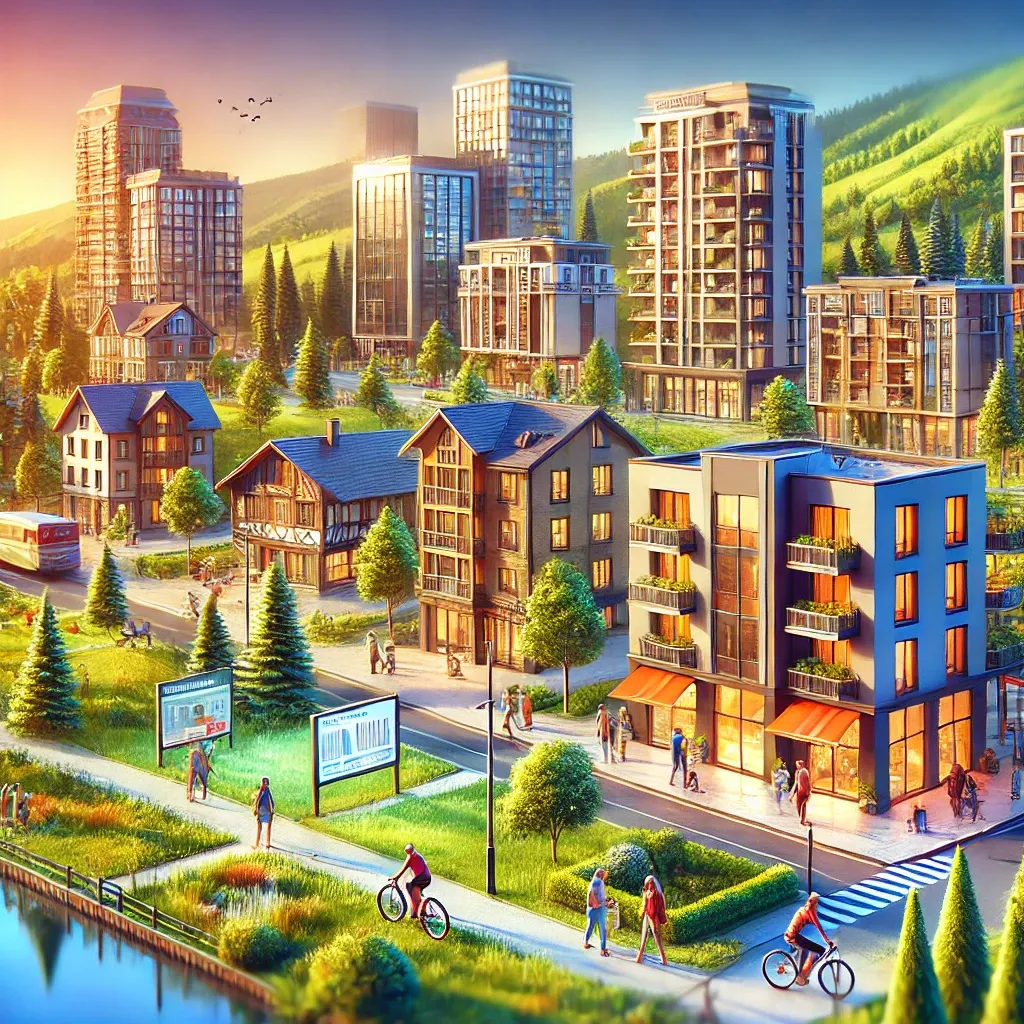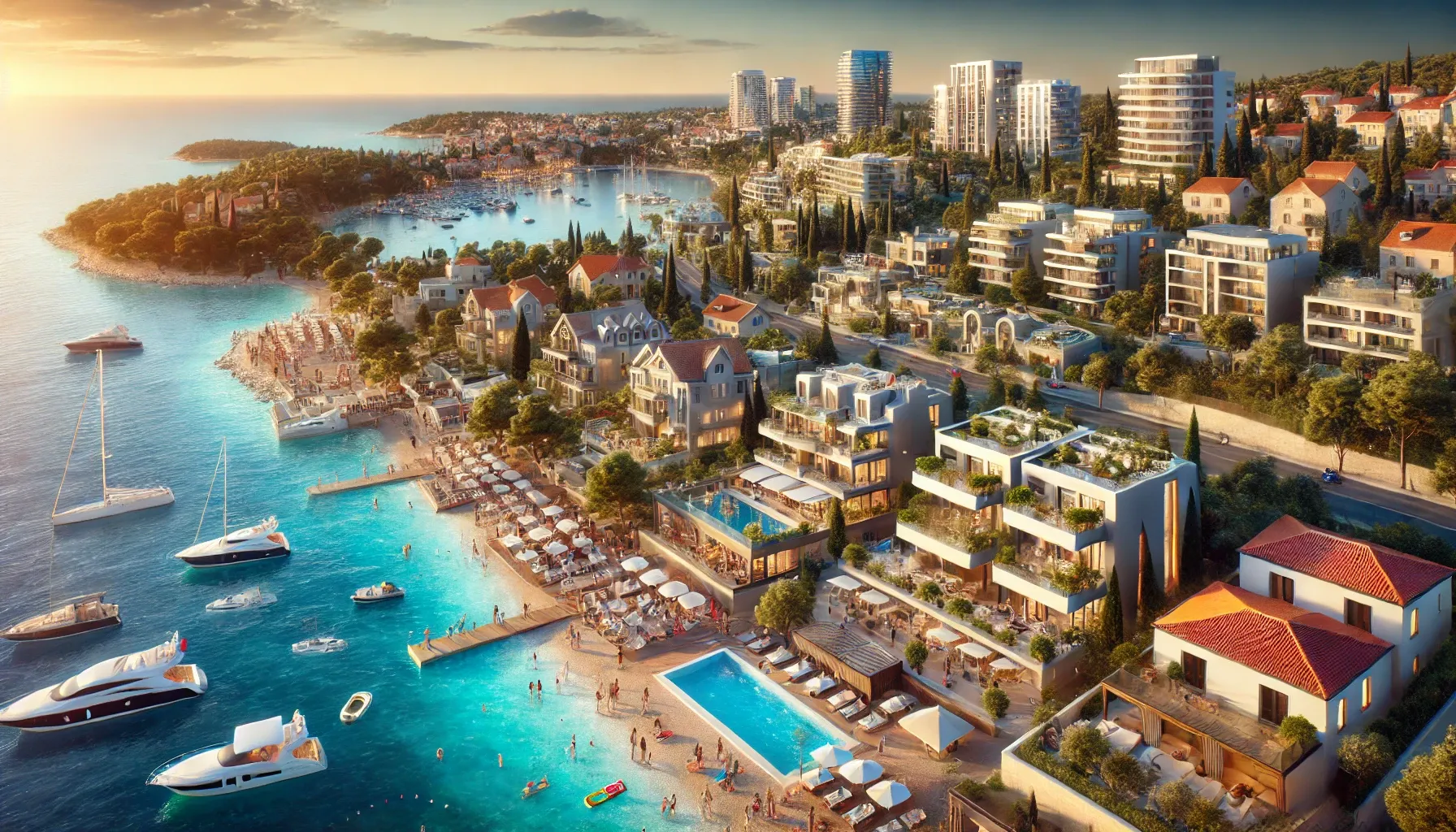The real estate market in the former Yugoslav republics

- Real estate in the countries of the former Yugoslavia: opportunities and prospects
- Tourism in Macedonia
- Investments and real estate in Serbia and Montenegro
Croatian Economy and Real Estate Market
The economy of Croatia is gradually recovering from the crisis that began in 2008. Construction volumes in the country are increasing, attracting foreign investors. As early as the 2000s, they started coming to Croatia, drawn by the dynamics of the real estate market. During this time, housing prices in the country were rising annually by 10-15%, and sometimes even by 30%. In 2008, prices reached their peak, but then a decline began. Nevertheless, the quality of construction and infrastructure has significantly improved during this time, allowing housing prices to return to the levels of 2006-2007.
Resort Areas and Investments
The southern part of the Croatian coast and the Istrian peninsula have become the main resort areas attracting investments in vacation homes. A new villa with a pool in Istria will cost between 250,000 and 500,000 euros, while apartments in new developments can be purchased for 1,400 to 1,600 euros per square meter. All properties are sold "turnkey" - with kitchen appliances, plumbing, and air conditioning included.
Infrastructure and Services
Croatia has a well-developed resort infrastructure, making it an attractive destination for tourists and investors. Some medical centers in the country, such as the orthopedic center in Lovran, are known throughout the continent. The country also has several international airports and an extensive ferry network.
Real estate in the former Yugoslav republics
Compared to Croatia, Macedonia and Bosnia and Herzegovina are less developed and poorer countries. Real estate in Macedonia is considered cheap by European standards, especially in small towns, where housing prices range from 300 to 400 euros per square meter. In the capital, Skopje, housing prices are higher, ranging from 2000 to 2500 euros per square meter. In the resort town of Ohrid, the cost of housing starts from 500 to 1000 euros per square meter.
Conclusion
Real estate in the former republics of Yugoslavia has its own characteristics and investment opportunities. Croatia stands out as a leader in this region due to its higher quality of life and infrastructure. By investing in real estate in this country, investors can expect stable price growth and potential profits.

Lake Ohrid and the old town of Ohrid have been included in the UNESCO World Heritage list. Ohrid is one of the most popular destinations in Macedonia, attracting tourists with its beauty and historical landmarks. Additionally, Macedonia has several ski resorts, such as Popova Shapka, Mavrovo, and Krushevo. The bus network in the country is very well developed, while the railway system is weak, which creates certain transportation issues. Macedonia has two airports, one located in the capital Skopje and the other in Ohrid.
Bosnia and Herzegovina
A long civil war is known to have led to the destruction of many cities and settlements in the past. However, for foreign tourists visiting this country, ski resorts have become the main attraction. Sarajevo, the capital of Bosnia and Herzegovina, offers not only high-class ski slopes but also spa resorts that attract many tourists. Most international airports in the country are located in Sarajevo and the cities of Tuzla, Banja Luka, and Mostar.
Serbia and Montenegro
In the past, they were part of a single union state, which was divided only in 2006.
9 October 2024
29 January
29 September
9 October 2024

Foreigners conducting business in Serbia or anticipating an increase in real estate prices in the coming years often decide to purchase property here. Despite the fact that the global...
Every yearMore and more foreign investors are directing their capital into the Serbian economy. Among these investors are not only large companies like Gazprom, but also medium-sized enterprises with a turnover of 2 to 10 million euros. Additionally, foreign banks from Germany, Greece, Belgium, and the USA are also interested in investing in this region.
The most popular areas for buying real estate in Serbia are as followsBelgrade and its surroundings, the industrial city of Novi Sad, as well as the central part of the country where the cities of Kragujevac, Čačak, and Kraljevo are located, are considered. There is also a high demand among foreign buyers for thermal resorts such as Vrnjačka Banja, Sijarina Banja, Niška Banja, and others.
After gaining independence in 2006, MontenegroThere was a real boom in the real estate market, especially on the coast. Property prices here skyrocketed, reaching a peak in 2007. After that, demand slowed down a bit, and prices began to adjust to global standards. Experts note that during the boom, housing prices were formed chaotically due to the huge demand. However, the market has now stabilized, and prices for new housing range from 1,000 to 4,000 euros per square meter.
Foreign citizens wishing to invest their savingsmay consider the possibility of buying not only real estate, but also plots of land in Montenegro, provided that their area does not exceed 5000 square meters. area does not exceed 5000 square meters. Montenegro is known for its resorts such as Budva, Becici, Herceg-Novi, Petrovac and others. Airports in Podgorica and Tivat provide quick access to these resorts for both locals and tourists from all over the world.
Countries of the former YugoslaviaIt was not possible to quickly integrate into the European Union. The Balkan wars and instability in the regions slowed down this process. Slovenia was the first of these countries to join the EU. Croatia was next in line and began accession negotiations starting in 2005.
Conclusion:
In conclusion, I would like to note that the breakup of Yugoslavia, although it led to economic decline and conflicts in the Balkans, did not become an obstacle to the development of the countries in the region. Some of the former republics, such as Slovenia and Croatia, have demonstrated resilience and even successful development after the devastating events of the 1990s.
Slovenia:
- It was a prosperous republic of Yugoslavia.
- Showed successful independent development
- Joined the European Union in 2004
- Stable state of the real estate market
- Developed infrastructure and tourism sector
Real estate in Slovenia:
Real estate prices are high, especially in the capital, Ljubljana. The variety of resorts has a positive impact on tourism.
Croatia:
- Gradual recovery of the economy after the civil war
- Attracting foreign investors and rising real estate prices
- Current quality of construction and infrastructure
- Popular resort areas for investing in vacation homes
Real estate in Croatia:
Prices have returned to the level of 2006-2007. Infrastructure and services in the resorts are well developed, which The infrastructure and services in the resorts are well developed, which ensures stability of the tourism sector.
Macedonia, Bosnia and Herzegovina:
- Least developed and poorest countries in the region
- Bringing up to the European level
- Real estate prices are significantly lower compared to other countries.
Although the path since the breakup of Yugoslavia has not been an easy one, some countries have shown resilience and potential for further development in the future. resilience and potential for further development in the future.
Tags
Comment
Popular Posts
9 October 2024
9931
29 September
321
9 October 2024
1484
Popular Offers

Subscribe to the newsletter from Hatamatata.com!
Subscribe to the newsletter from Hatamatata.com!
I agree to the processing of personal data and confidentiality rules of Hatamatata











